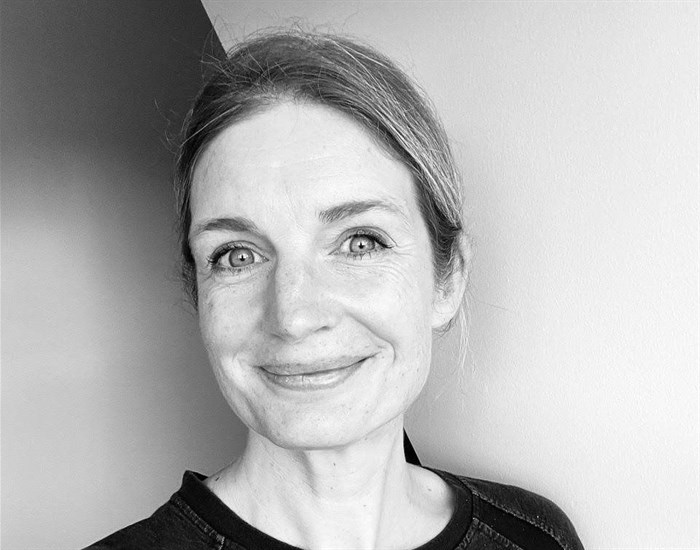#Newsmaker: D&AD's new president, Rebecca Wright

Wright is the first president elected to D&AD with a background in education. She has been in education full-time since 2008 and has significant experience in leading curriculum design, combined with a background in graphic communication design. Wright has an impressive record that will help push D&AD forward in the coming years.
We spoke to her to find out more about her appointment and plans as president for the next couple of years...
Congratulations on your appointment! How are you feeling about it?
Thank you! I’m feeling excited and privileged to have this opportunity to foreground education and learning in the year ahead.
Could you tell us a bit more about the work you do outside of D&AD?
I’m dean at Central Saint Martins, University of the Arts London (UAL), where I oversee three academic programmes; Culture and Enterprise; Graphic Communication Design; and Spatial Practices. At the college, we are increasingly interested in transdisciplinary and transcultural spaces of learning and the role art and design can play in addressing societal, ecological and economic challenges. I love my job!
I’m also co-founder of GraphicDesign& with my longtime collaborator, graphic designer Lucienne Roberts. GraphicDesign& publishes books and curates exhibitions that advocate for graphic design – what it can do and why it matters – and explores how graphic design connects with the wider world and the value that it brings.
As president, what is your vision for 2021/22?
Wherever we are in our creative career, we are still learning. I want us to open up about how we learn, why we learn and how radical the act of learning can be.
The World Economic Forum 2021 placed ‘active learning and learning strategies’ second on their list of top ten skills for 2025 – ahead of creativity.
I’m going to be working with D&AD this year to find ways to connect, extend and challenge our community through learning, together.
I see this presidency as an opportunity to advocate for learning as a fundamentally creative and collective activity, for the benefit of us all, including our clients and wider society.
As the first president of the world of education, how are you hoping to use the knowledge and skills you have to enhance your vision?
I hope that one of the skills I bring from education is the ability to work creatively and collaboratively, and this year is absolutely going to be about working with the D&AD team, the board of trustees and our creative community.
This post-pandemic moment feels like a significant point of change for education and it’s the right time for D&AD to be focusing attention on how we learn, where we learn, what we are learning and where our learning is coming from.
Being a design educator, I’m used to asking questions, facilitating and iterating – I’m sure this year is going to involve a lot of all three.
How do you hope to continue the ideal of D&AD to nurture the next generation of creative talent?
Learning is a central transformational core of D&AD. As a trustee, I’ve seen behind the scenes of the really significant work D&AD have been doing supporting the next generation and breaking down the barriers to entering the industry – in particular through the growing Shift programme now delivered in partnership with Google, which is D&AD's free industry-led night school for emerging creatives who don't have a university-level degree.
I’m looking forward to working with the team on this and all the work they do promoting and supporting creative excellence and talent throughout a lifetime, from training and workshops to industry insights and professional development. One of the things I’m most excited about doing this year is flipping the classroom and providing a platform for us to learn from the learners – they have much to teach us and there is so much more we all have to learn.
What, in your opinion, is the importance of giving underrepresented voices a platform in the creative industry?
The creative industries will be stronger for being more diverse and representative of the society we serve. There are still many underrepresented and unheard voices and our community is poorer for this. In a year where our focus is on learning, we need to reflect on what learning the creative industries need to do in this space and how we lead by example. This is a time for disruption. I don’t believe the solutions to the complex grand challenges we face are going to come from within established hierarchies; the crises of social justice and climate are not siloed and we need to value, include and learn with each other in new ways.
What are the most important aspects of successfully keeping current and new audiences engaged within the creative industry?
We need to be relevant, inclusive, open and brave. We need to listen and engage. We need to ensure that we are supporting young creatives in our schools, colleges and universities – and into our industries. In so many ways the pandemic has had a disproportionate impact on young people, and a measure of the strength and seriousness of our community is in how we provide opportunities and reach out to them now.
What is the best advice you have ever received?
Growing up, my mum would often remind me that ‘you never know what’s round the corner’ – and after the last 18 months that’s never felt more relevant. I’m a romantic and an optimist and what I like about this maxim is the promise of possibility. Designing, teaching and learning are optimistic acts – they presume we have the ability to shape our future and the possibility to make a better tomorrow.



















